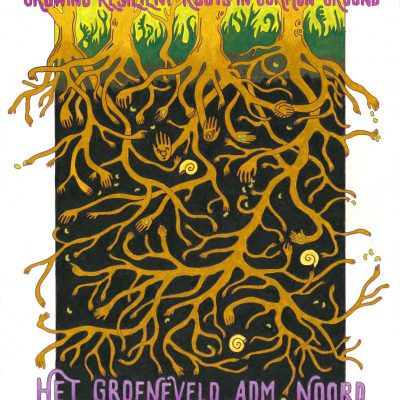
The fertilizer giant Yara is trying to promote itself as a climate champion, at the forefront of the fight against climate change. However, the fertilizer industry contributes about 2.4% of GhG emissions and to exceeding planetary boundaries of nitrogen use by 2-3 times.
Yara claims to be an important part of the climate solution because of their “low-carbon green fertilizers” – let’s look into it. Take Herøya, one of their sites in Norway that uses renewable energy instead of fossil gas to produce fertilizers, as an example. This pilot project produces only very small volumes – 20,000 tonnes per year compared to 18.4 million tonnes total fertiliser volumes in 2023 – which means that Yara’s so-called “green fertilizers” represent only a tiny fraction of their total production. Besides, this project will not lower their emissions – it will only come on top of other productions and not replace it.
Yara has also invested in carbon capture storage (CCS) and bought up space to store their emissions underseas, from their factory in Sluiskil. The emissions captured and stored at the Sluiskil plant represent 1.3% of Yara’s total emissions. We can’t trust these solutions from the fossil fuel industry, as upscaling takes time, is costly, and requires a lot of energy. CCS promises are a tool for the fossil fuel industry to keep their business running as usual.
At a time where fertilizer reduction targets are being discussed, it is clear that Yara and the fertilizer industry are greenwashing their activities to secure their profits and perpetuate their grip over the agricultural sector in the context of urgently needed profound changes to move away from the dependence of fossil fertilizers.
Clean ammonia: gas expansion through greenwashing
Fertilizer companies are creating new markets for ammonia. In addition to applying it to the soil, they dream of pumping it into motors and through pipes. They present ammonia to decision makers as the ideal carrier for energy in the form of hydrogen which could be transported through LNG pipes. They claim it to be “oh so clean” because they will offset any emissions through carbon capture and storage (CCS). For production, only “sustainable, natural” gas will be used.
What do the companies leave out in this beautiful tale?
1. Gas is a fossil fuel. Extracting and using it destroys the planet.
2. CCS projects are experimental and risky, making them a false solution.
3. LNG infrastructure is not sufficient to transport ammonia, expansion is inevitable.
4. There is no “demand” – it is being created through lobbyists to ensure that they can sell more of their product.
Fossil companies and fossil fertilizer producers are pouring billions into convincing EU-decision makers to lock in the hydrogen solution as the way to decarbonise the economy. In this way, they have plenty of opportunities to make profit from fossil fuels, claiming that the economy “decarbonises” on paper.
If you want to go further, check out our instagram post on The connection between the hydrogen hype, fertilizers, and the fossil fuel industry!
References:
Baldock, C., Grassi, F., & Willis, J. (2023). Financial markets need to focus on nitrogen. In Fixing NITROGEN (Vol. 2, pp. 3–61). Planet Tracker. (report)
Food & Water Action Europe, We Smell Gas (2023): Hydrogen: Climate Fix Or Fossil Fuelled Fiction?. Hydrogen is linked to dirty fossil fertilizers (p.11) (publication)
Howarth, R. W., & Jacobson, M. Z. (2021). How green is blue hydrogen? Energy Science & Engineering, 9(10), 1676–1687. (publication)
Tostado, L. (2023). Anonymous ammonia | EnergyTransition. (publication)
Yara International ASA. YARA Integrated Report 2023. (calculations were made using Yara’s annual report 2023)










